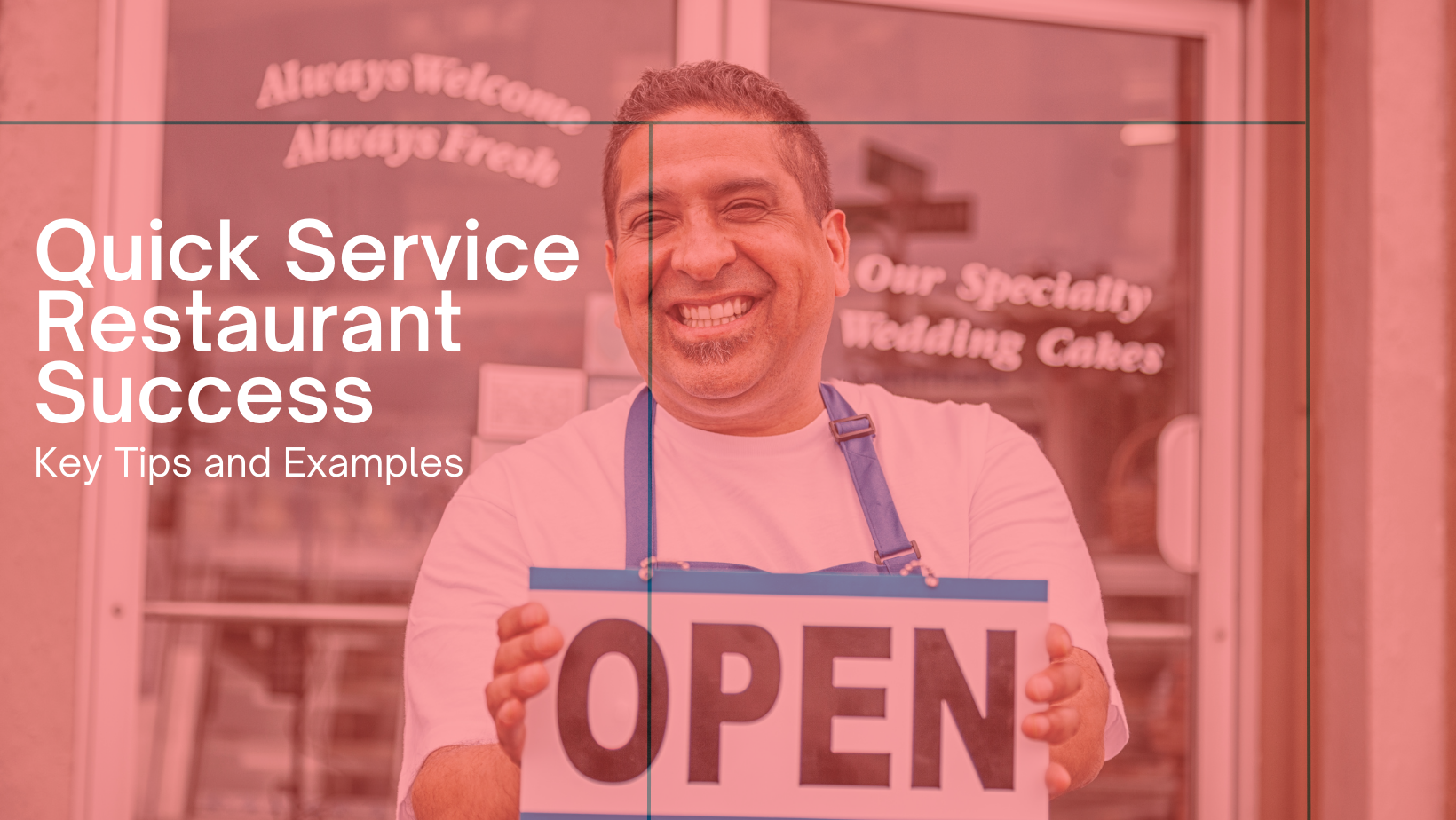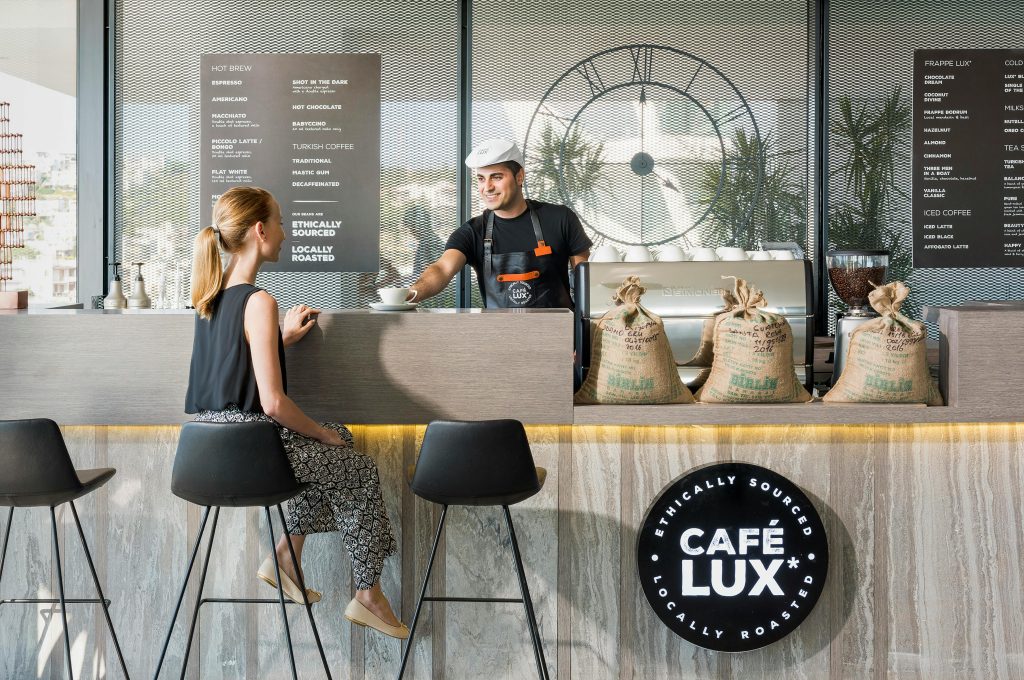In the bustling world of quick service restaurants (QSRs), standing out from the competition is paramount to success. To achieve unparalleled heights, it takes more than just tasty food and a convenient location. It requires a strategic approach, innovative thinking, and a relentless focus on customer satisfaction. In this blog post, we’ll explore seven essential steps to transform your Quick service restaurant into a thriving business, setting you on the path to resounding success.
Craft a Unique Concept
The cornerstone of any successful QSR is a unique concept that sets it apart from the rest. Whether it’s a fusion of flavors, a specialized menu item, or a distinct ambiance, your concept should resonate with your target audience and leave a lasting impression. Build a strong brand around your concept to create a loyal customer base that keeps coming back for more.
Prioritize Exceptional Restaurant Service
Exceptional customer service is non-negotiable in the QSR industry. Train your staff to be friendly, efficient, and attentive to customer needs. Utilize technology like self-ordering kiosks and mobile apps to streamline the ordering process and reduce wait times. By going above and beyond to create a memorable dining experience, you’ll cultivate customer loyalty and drive repeat business.
Focus on Food Quality
In the fast-paced world of QSRs, food quality is king. Source fresh, high-quality ingredients and invest in talented chefs who can consistently deliver delicious meals. Maintain strict hygiene standards to ensure food safety and cleanliness. Encourage feedback from customers and use it to continually refine and improve the taste, presentation, and overall quality of your offerings.
Optimize Operational Efficiency
Efficiency is key to success in the QSR industry. Streamline your operations by optimizing processes, reducing wait times, and improving order accuracy. Design a well-organized kitchen layout, implement automated inventory management systems, and provide thorough training to your staff to ensure smooth workflow and maximize productivity. By minimizing inefficiencies, you’ll enhance the customer experience and boost profitability.
Embrace Technology
Stay ahead of the curve by embracing technology in your QSR. Leverage online ordering platforms, mobile apps, and social media to reach a wider audience and enhance convenience for your customers. Invest in a robust POS system that integrates seamlessly with your kitchen and inventory management, allowing for real-time data analysis and informed decision-making. By harnessing the power of technology, you’ll stay competitive in today’s digital landscape.
Take Restaurant Marketing Seriously
Effective marketing is essential for attracting and retaining customers in the QSR industry. Develop a comprehensive marketing strategy that encompasses both online and offline tactics. Engage with your target audience through social media, run targeted advertising campaigns, collaborate with influencers, and utilize email marketing to stay top of mind. Participate in local events and engage with the community to build goodwill and foster loyalty among your customer base.
Monitor and Adapt
To thrive in the ever-evolving QSR landscape, it’s crucial to continuously monitor your performance and adapt to changing trends and customer preferences. Keep a close eye on your financials, solicit feedback from customers, and stay abreast of market developments. Analyze data to identify opportunities for improvement and make informed decisions about pricing, menu offerings, and promotional activities. By remaining agile and responsive to feedback, you’ll position your QSR for long-term success.
Quick Service Restaurant Examples
Here are some examples of well-known QSR chains:
McDonald’s: Arguably the most famous fast food chain globally, McDonald’s is known for its burgers, fries, and various breakfast offerings.
Subway: Famous for its made-to-order submarine sandwiches, Subway offers a range of fresh ingredients and customization options.
KFC (Kentucky Fried Chicken): Specializing in fried chicken, KFC is renowned for its secret blend of 11 herbs and spices.
Burger King: Known for its flame-grilled burgers, Burger King also offers a variety of sandwiches, sides, and desserts.
Wendy’s: Wendy’s is known for its square-shaped burgers, fresh frozen beef, and signature Frosty desserts.
Achieving success in the competitive world of quick-service restaurants requires a strategic approach and a relentless focus on customer satisfaction. By following these seven key steps—crafting a unique concept, prioritizing exceptional customer service, focusing on food quality, optimizing operational efficiency, embracing technology, marketing strategically, and monitoring and adapting to change—you can elevate your QSR to new heights of success. Remember, success doesn’t happen overnight, but with dedication, passion, and the right strategies in place, your QSR can become a resounding success story. So, what are you waiting for? Start implementing these steps today and watch your business flourish!
Don’t underestimate the power of investing in a POS system. A robust POS system is instrumental in maintaining consistent quality and service standards, ultimately contributing to the overall success of your QSR. Contact EasyEat Company today to get started.
FAQs About Quick Service Restaurants
- How do you effectively balance the integration of technology like self-ordering kiosks and mobile apps with maintaining personalized and attentive customer service in a quick-service restaurant?
Balancing the integration of technology with maintaining personalized customer service in a quick-service restaurant requires careful planning and execution. It involves leveraging technology such as self-ordering kiosks and mobile apps to streamline processes and reduce wait times, while also ensuring that staff are trained to provide friendly and attentive service. Utilizing technology should complement, rather than replace, human interaction. For instance, self-ordering kiosks can be used to expedite orders, but staff should still be available to assist customers with questions or special requests. It’s about finding the right balance between efficiency and personalization to enhance the overall dining experience.
- Can you provide specific examples or case studies of QSRs that have successfully adapted to changing market trends and customer preferences, and how they implemented their strategies?
Successful adaptation to changing market trends and customer preferences often involves a combination of factors, including innovation, flexibility, and responsiveness. QSRs that have thrived in this environment have typically demonstrated a willingness to evolve their menu offerings, embrace new technologies, and engage with customers to understand their needs and preferences. For example, some chains have introduced healthier menu options in response to growing consumer demand for healthier alternatives, while others have launched loyalty programs or mobile ordering apps to enhance convenience and customer engagement. Case studies of such QSRs could provide valuable insights into the specific strategies and tactics they employed to stay competitive and relevant in the market.
- In what ways can a quick-service restaurant ensure that its marketing efforts resonate with its target audience and effectively differentiate itself from competitors in a saturated market?
Ensuring that marketing efforts resonate with the target audience and differentiate the quick-service restaurant from competitors requires a comprehensive and strategic approach. This involves understanding the target demographic and tailoring marketing messages and tactics accordingly. For instance, utilizing social media platforms like Instagram and TikTok may be effective for reaching younger audiences, while traditional advertising channels such as television or radio could be more suitable for targeting older demographics. Additionally, focusing on the unique value proposition of the QSR, whether it’s a special menu item, a commitment to sustainability, or a memorable dining experience, can help set it apart from competitors and attract loyal customers. Collaborating with influencers, participating in local events, and soliciting feedback from customers are also effective strategies for building brand awareness and fostering customer loyalty. Ultimately, successful marketing requires a deep understanding of the target audience and a creative approach to communicating the brand’s message effectively.




